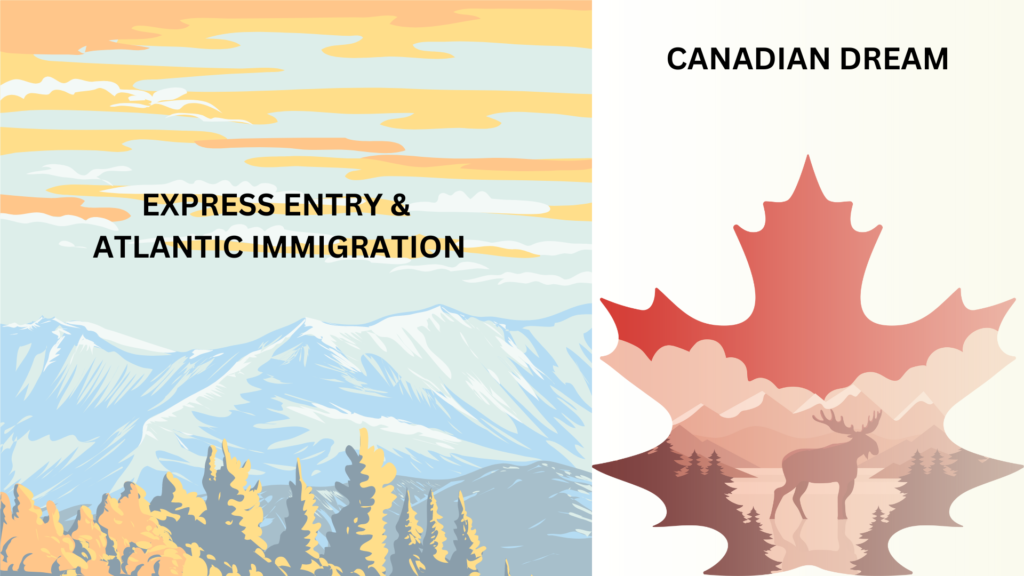About Atlantic Immigration
The Atlantic Immigration Program serves as a route to obtaining permanent residence for skilled foreign workers and international graduates who aspire to work and reside in one of Canada’s four Atlantic provinces: New Brunswick, Nova Scotia, Prince Edward Island, or Newfoundland and Labrador. This initiative facilitates employers in recruiting capable individuals for positions that have proven challenging to fill with local candidates.
The Atlantic Immigration Pilot Program (AIPP) is a collaborative effort between the Canadian federal government and the Atlantic provinces aimed at addressing labor market needs and stimulating economic growth in the region. Launched in 2017, the AIPP offers a pathway for skilled workers, intermediate-skilled workers, and international graduates to settle permanently in New Brunswick, Nova Scotia, Prince Edward Island, and Newfoundland and Labrador. By facilitating the recruitment of foreign talent, the program helps employers in the Atlantic provinces fill job vacancies that cannot be met locally, thereby contributing to the region’s prosperity and diversity.
How Does it Work? The AIPP operates through three main streams:
- Atlantic High-Skilled Program: This stream targets highly skilled individuals who possess at least one year of work experience in a management, professional, or technical/skilled occupation.
- Atlantic Intermediate-Skilled Program: Geared towards individuals with at least one year of work experience in a semi-skilled occupation.
- Atlantic International Graduate Program: Tailored for international students who have graduated from eligible publicly-funded institutions in the Atlantic region.
Key Features and Benefits:
- Employer Endorsement: The AIPP requires candidates to have a job offer from a designated employer in one of the Atlantic provinces. Employers must receive endorsement from their respective provincial government before making a job offer to an immigrant.
- No Labor Market Impact Assessment (LMIA) Required: Unlike other Canadian immigration programs, the AIPP does not necessitate a Labor Market Impact Assessment, streamlining the hiring process for employers.
- Pathway to Permanent Residence: Successful candidates, along with their families, are granted permanent residency in Canada, offering stability and long-term prospects for settlement and integration.
- Regional Focus: By encouraging immigration to the Atlantic provinces, the program aims to address demographic challenges, stimulate economic growth, and foster vibrant communities in the region.
Eligibility Criteria: To qualify for the AIPP, candidates must meet certain criteria, including:
- Language proficiency (minimum CLB level 4)
- Educational qualifications
- Relevant work experience
- Adequate settlement funds
- Intention to reside in one of the Atlantic provinces
Navigating the Application Process: Applying for the AIPP involves several steps, including securing a valid job offer from a designated employer, obtaining provincial endorsement, and submitting a complete application for permanent residence to Immigration, Refugees, and Citizenship Canada (IRCC). Applicants should ensure they meet all eligibility requirements and submit accurate documentation to avoid delays or rejection.

Express Entry
Launched in 2015, Express Entry is Canada’s flagship immigration management system, designed to attract skilled workers who can contribute to the country’s economy.
Here’s how it works:
- Eligibility Assessment: To qualify for Express Entry, candidates must meet the eligibility criteria for one of the three federal economic immigration programs:
- Federal Skilled Worker Program
- Federal Skilled Trades Program
- Canadian Experience Class
- Comprehensive Ranking System (CRS): Eligible candidates are assigned a CRS score based on factors such as age, education, work experience, language proficiency, and adaptability. Higher CRS scores increase the likelihood of receiving an Invitation to Apply (ITA) for permanent residency.
- Pool Entry: Qualified candidates enter the Express Entry pool, where they are ranked against each other based on their CRS scores. The highest-ranked candidates are issued ITAs during regular draws conducted by Immigration, Refugees, and Citizenship Canada (IRCC).
- Invitation to Apply: Candidates who receive an ITA have 60 days to submit a complete application for permanent residence, including supporting documents and fees. Successful applicants are typically processed within six months.
- Provincial Nominee Programs (PNPs): Express Entry candidates may also receive nominations from Canadian provinces and territories through their respective PNPs, which provide additional CRS points and expedite the immigration process.
“Here is a list of invitations issued in 2024
The Express Entry system is a comprehensive ranking system based on points, through which top candidates in the pool are invited to apply for permanent residency in Canada every two weeks. Follow for the latest Express Entry Draws.
| DATE | CATEGORY | INVITATIONS ISSUED | CUTOFF |
| APR 23 | GENERAL | 2095 | 529 |
| APR 11 | STEM OCCUPATIONS | 4500 | 491 |
| APR 10 | GENERAL | 1280 | 549 |
| MAR 26 | FRENCH LANGUAGE | 1500 | 388 |
| MAR 25 | GENERAL | 1980 | 524 |
| MAR 13 | TRANSPORT | 975 | 430 |
| MAR 12 | GENERAL | 2850 | 525 |
| FEB 29 | FRENCH LANGUAGE | 2500 | 336 |
| FEB 28 | GENERAL | 1470 | 534 |
| FEB 16 | AGRICULTURE AND AGRI FOODS | 150 | 437 |
| FEB 14 | HEALTHCARE OCCUPATIONS | 3500 | 422 |
| FEB 13 | GENERAL | 1490 | 535 |
| FEB 1 | FRENCH LANGUAGE | 7000 | 365 |
| JAN 31 | GENERAL | 730 | 541 |
| JAN 23 | GENERAL | 1040 | 543 |
| JAN 10 | GENERAL | 1510 | 546 |
| TOTAL INVITATIONS TILL DATE | 34570 |
“Express Entry System Canada:”
Conclusion
For skilled workers and international graduates seeking opportunities in Canada, the AIPP offers a viable pathway to permanent residency and a brighter future in the Atlantic region. While Express Entry with its streamlined process is emphasizing on attracting skilled talent and paving the way for a brighter future, creating the Canadian dream for millions of immigrants.”
